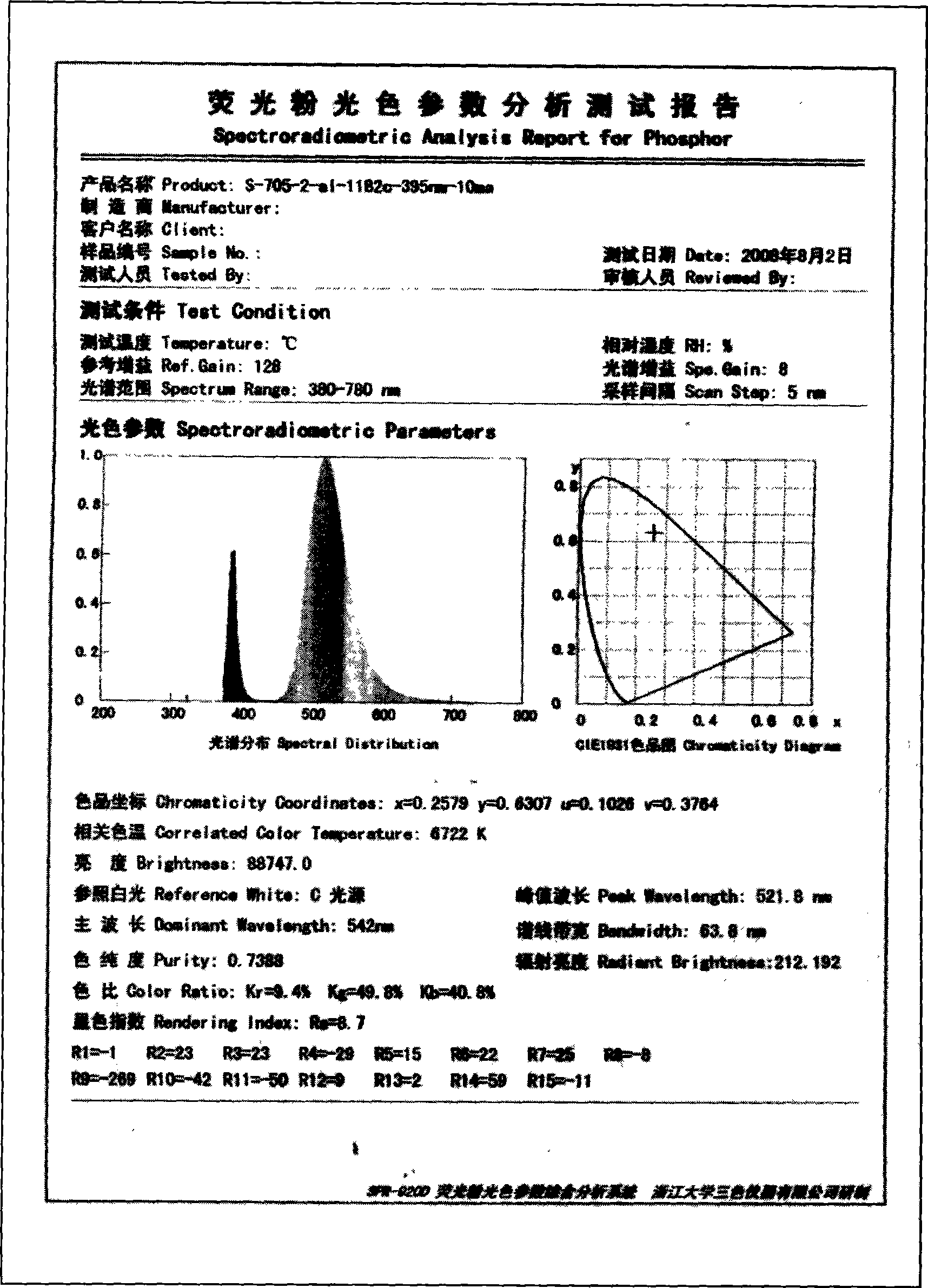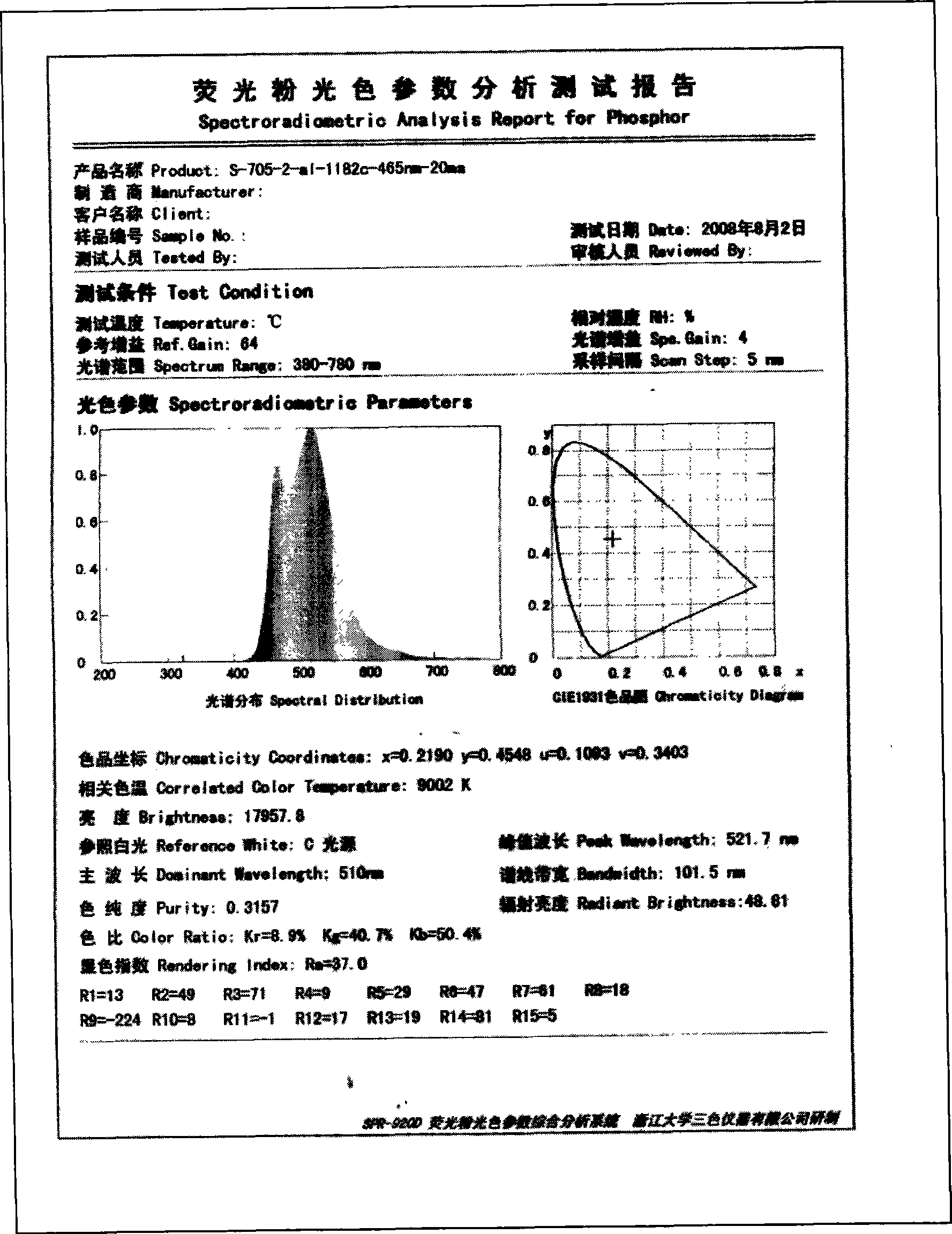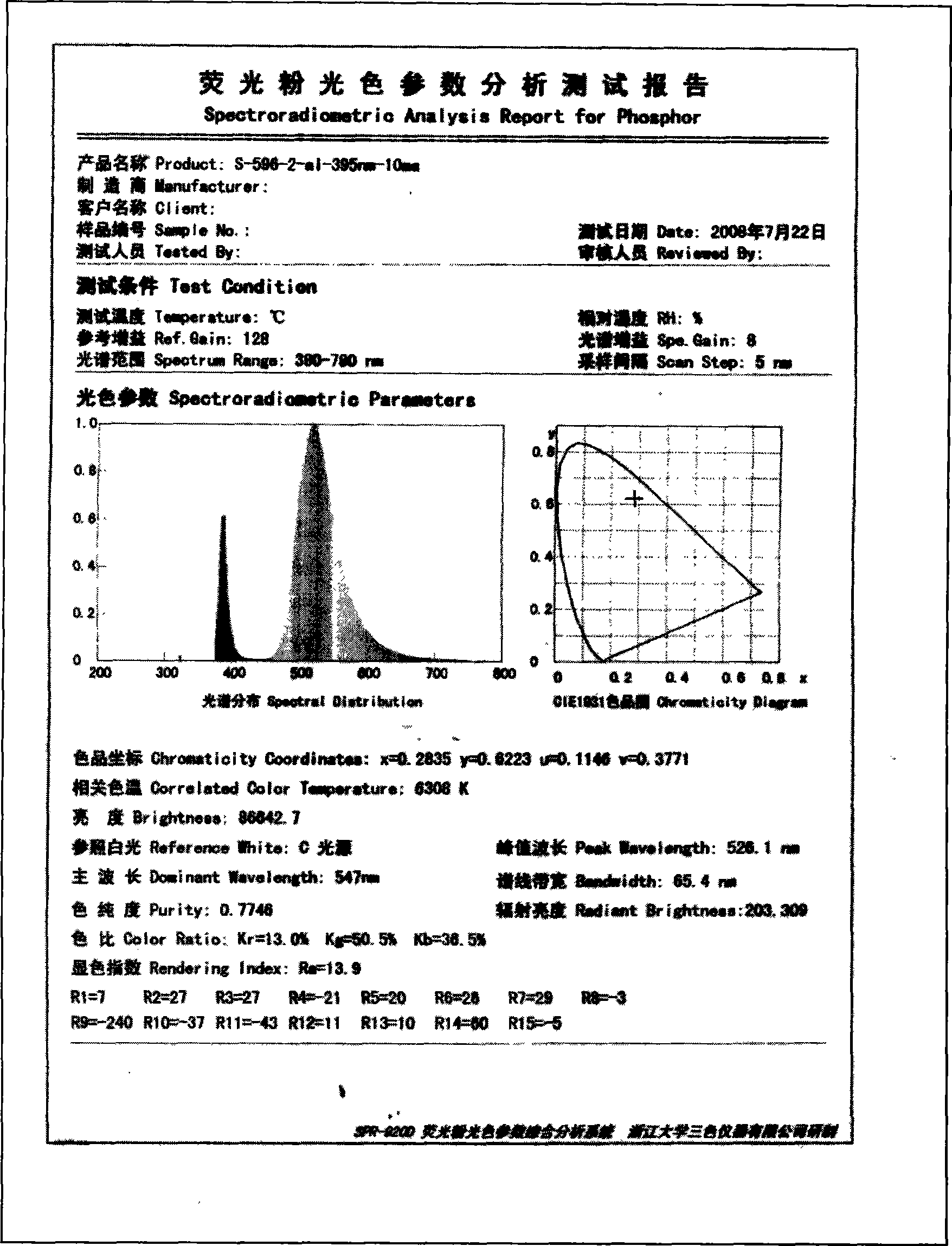Orthosilicate green phosphor for light emitting diode and preparation thereof
A green phosphor, light-emitting diode technology, applied in the field of radiation materials, can solve problems such as low luminous brightness
- Summary
- Abstract
- Description
- Claims
- Application Information
AI Technical Summary
Problems solved by technology
Method used
Image
Examples
Embodiment
[0116] First, it is clearly stated that the valence state of the sulfide ion is -2. The inventor confirmed that the lowest concentration of sulfide ions introduced is 4 mg / g, which changes the wavelength of the luminescent spectrum and reduces the luminous brightness by 2-4%.
[0117] For Se -2 The introduction of ions requires a long processing time (from 10-20 hours), which makes Eu +2 radiation wavelength shift.
[0118] Introduced ion S -2 and / or Se -2 , will change the activation ion Eu +2 The characteristics of the original Eu +2 The standard afterglow time is τ e = 160 nanoseconds, the S -2 Introduced into the composition of orthosilicate phosphor (to 0.002 atomic fraction), with the afterglow time reduced to τ e = 135 nanoseconds. Reductions like this are used to reduce phosphor usage at high current loads in light emitting diodes (LEDs). The numerical advantage of the phosphor powder of the present invention is changed in its composition, which is characteri...
PUM
| Property | Measurement | Unit |
|---|---|---|
| Thickness | aaaaa | aaaaa |
Abstract
Description
Claims
Application Information
 Login to View More
Login to View More - R&D
- Intellectual Property
- Life Sciences
- Materials
- Tech Scout
- Unparalleled Data Quality
- Higher Quality Content
- 60% Fewer Hallucinations
Browse by: Latest US Patents, China's latest patents, Technical Efficacy Thesaurus, Application Domain, Technology Topic, Popular Technical Reports.
© 2025 PatSnap. All rights reserved.Legal|Privacy policy|Modern Slavery Act Transparency Statement|Sitemap|About US| Contact US: help@patsnap.com



